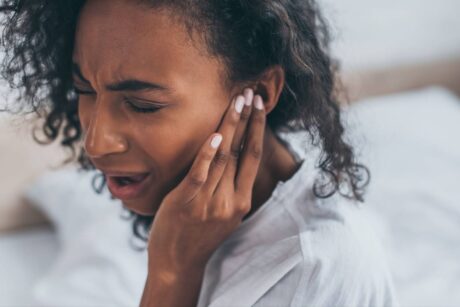That sudden, high-pitched squeal or whistle from your hearing aid can be more than just a little annoying – it can be startling and sometimes even embarrassing. If you’ve experienced this, you’re not alone. This sound is known as hearing aid feedback, and it’s a common issue faced by many hearing aid users in Singapore and around the world. The good news is that, in most cases, it’s a problem that can be solved. Understanding what causes hearing aid feedback is the first step towards clearer, more comfortable hearing.
At Listening Lab SG, we believe in empowering you with knowledge about your hearing health. This guide will help you understand why your hearing aid whistles and what you can do to prevent it.
What Causes Feedback in Hearing Aids?
Hearing aid feedback occurs when the amplified sound that is supposed to go down your ear canal escapes and is picked up again by the hearing aid’s microphone. This creates a loop, re-amplifying the sound and resulting in that familiar whistling. Several factors can contribute to this:
- Improper Hearing Aid Fitting: If your hearing aid, whether it’s an in-the-ear style or a behind-the-ear model with an earmold or dome, doesn’t fit snugly, it can create gaps. Sound then leaks out through these gaps and re-enters the microphone. The precision of the initial hearing aid fitting with a hearing aid specialist is crucial to prevent this. Over time, changes in your ear shape due to weight fluctuations or ageing can also affect the fit.
- Earwax Buildup: A significant accumulation of earwax can block the ear canal. When the amplified sound hits this blockage, it can bounce back out of the ear and into the hearing aid microphone, causing feedback.
- Sound Leaking from the Ear Canal: Even with a decent fit, certain situations or levels of amplification might cause sound to escape the ear canal and be re-amplified.
- Faulty Tubing or Loose Earmold: For Behind-The-Ear (BTE) hearing aids, the tubing that connects the hearing aid to the earmold can harden, crack, or shrink over time. This can cause the earmold to pull away from the ear, breaking the seal. The earmold itself might be loose, worn out, or not inserted correctly, allowing sound to leak.
The Role of Feedback Cancellation Technology
Fortunately, modern hearing aid technology has made significant strides in managing and preventing hearing aid feedback. Most digital hearing aids today come equipped with sophisticated feedback cancellation systems. These systems are designed to detect the whistling sound almost instantaneously and generate an out-of-phase signal to cancel it out before you even notice it.
Leading manufacturers are continually refining this technology. For instance, brands like Signia hearing aids, with their advanced platforms, and Widex hearing aids, known for their sound quality, incorporate highly effective feedback management systems. These advancements mean that while feedback can still occur, it’s often less frequent and more manageable than with older hearing aid models. However, technology alone can’t always overcome physical issues like a poor fit or significant earwax.
Tips to Prevent Your Hearing Aids From Whistling
Practising good hearing aid care and being mindful of how you use your devices can significantly reduce the chances of experiencing feedback:
- Proper Insertion Techniques: Ensure you are inserting your hearing aids correctly every time. Your hearing aid specialist at Listening Lab SG would have shown you the correct method. If you’re unsure, don’t hesitate to ask for a refresher. A secure and proper fit is your first line of defence against feedback.
- Device Hygiene: Clean your hearing aids daily according to the manufacturer’s instructions. Remove any wax or debris from the microphone port and sound outlet, as blockages here are a common culprit for feedback.
- Personal Ear Care: It’s equally important to maintain good ear hygiene. If you suspect earwax buildup, which can also cause feedback by reflecting sound, consult a professional for safe removal. Always avoid inserting cotton swabs into your ear canal, as this can push wax further in and potentially cause complications.
- Checking for Physical Damage or Wear: Regularly inspect your hearing aids, especially the tubing and earmolds (for BTE devices), for any signs of wear and tear, cracks, or hardening. If you notice any issues, it’s time to see your hearing professional.
When to Visit a Hearing Aid Specialist

If you’ve tried the tips above and the hearing aid feedback persists, or if it occurs frequently, it’s important to consult a hearing aid specialist. Self-adjustments can sometimes make things worse if the underlying cause isn’t addressed correctly.
Here’s how a hearing aid specialist at Listening Lab Singapore can help:
- Professional Assessment: Our specialists can thoroughly examine your ears and hearing aids to determine the exact cause of the feedback.
- Cleaning Services: We can professionally clean your hearing aids and check your ears for wax buildup.
- Refitting and Adjustments: If the issue is related to the fit, we may need to adjust your current earmold or dome, or in some cases, take a new impression for a custom hearing aid fitting. Sometimes, reprogramming your hearing aid settings is all that’s needed.
- Repairs or Replacements: If components like tubing are damaged, we can replace them. We can also advise if your hearing aids require manufacturer repair.
Don’t let persistent hearing aid whistling affect your daily life and communication. The team at Listening Lab in Singapore is here to provide expert support and ensure your hearing aids are performing optimally.
Tired of your hearing aids whistling? Schedule an appointment with Listening Lab Singapore today for a comprehensive hearing aid check-up, cleaning, or hearing aid fitting adjustment. Let our experienced hearing aid specialists help you hear clearly and comfortably again! Book a free hearing test today.










